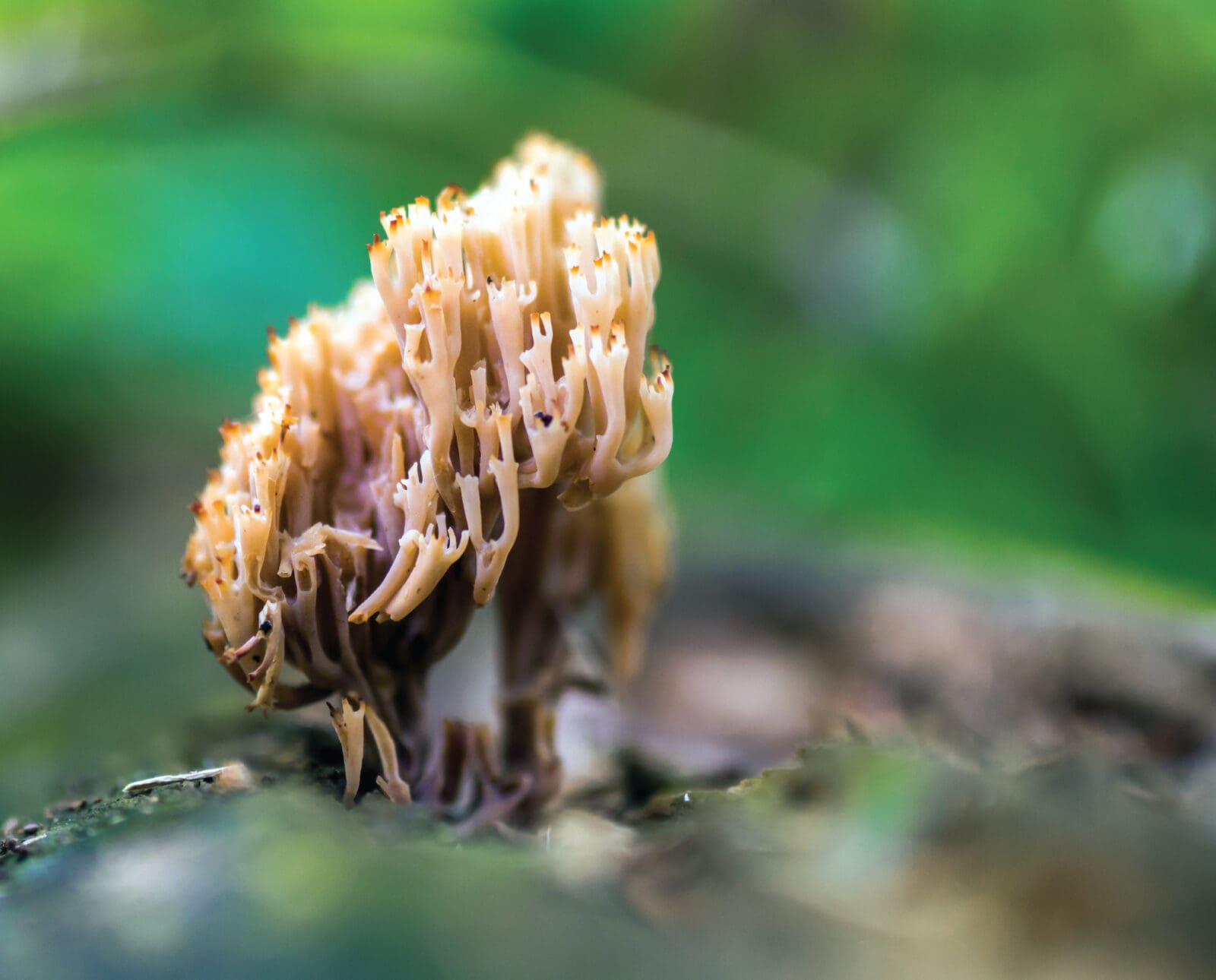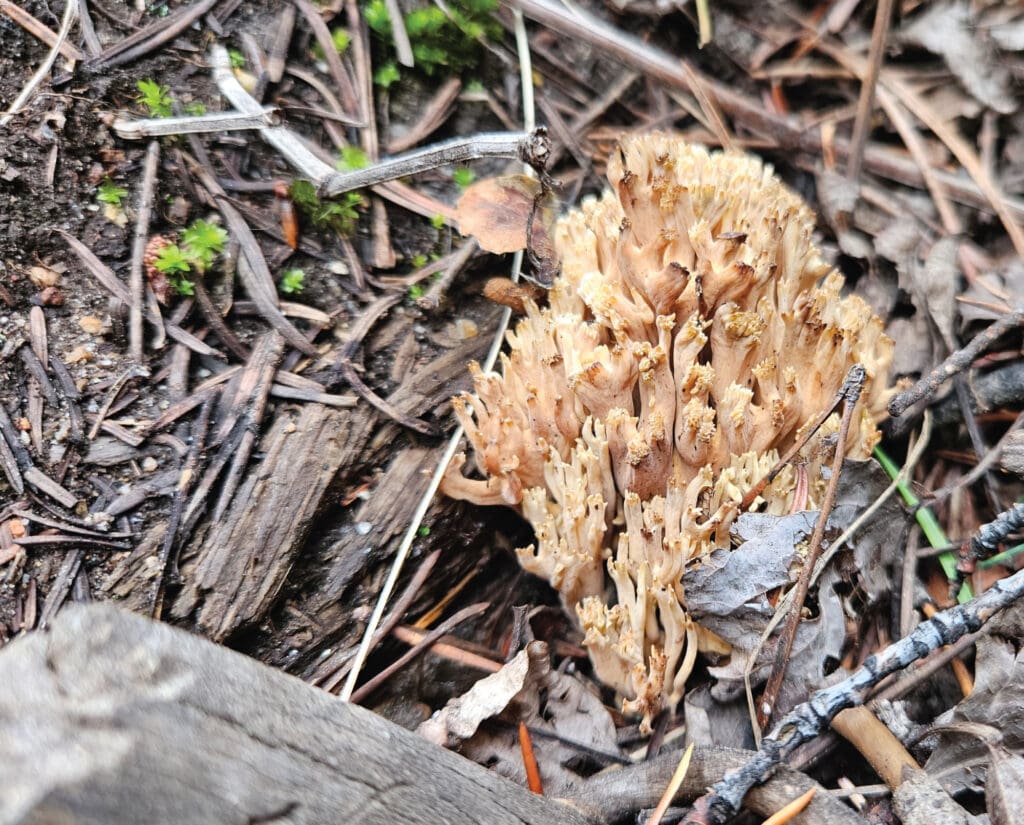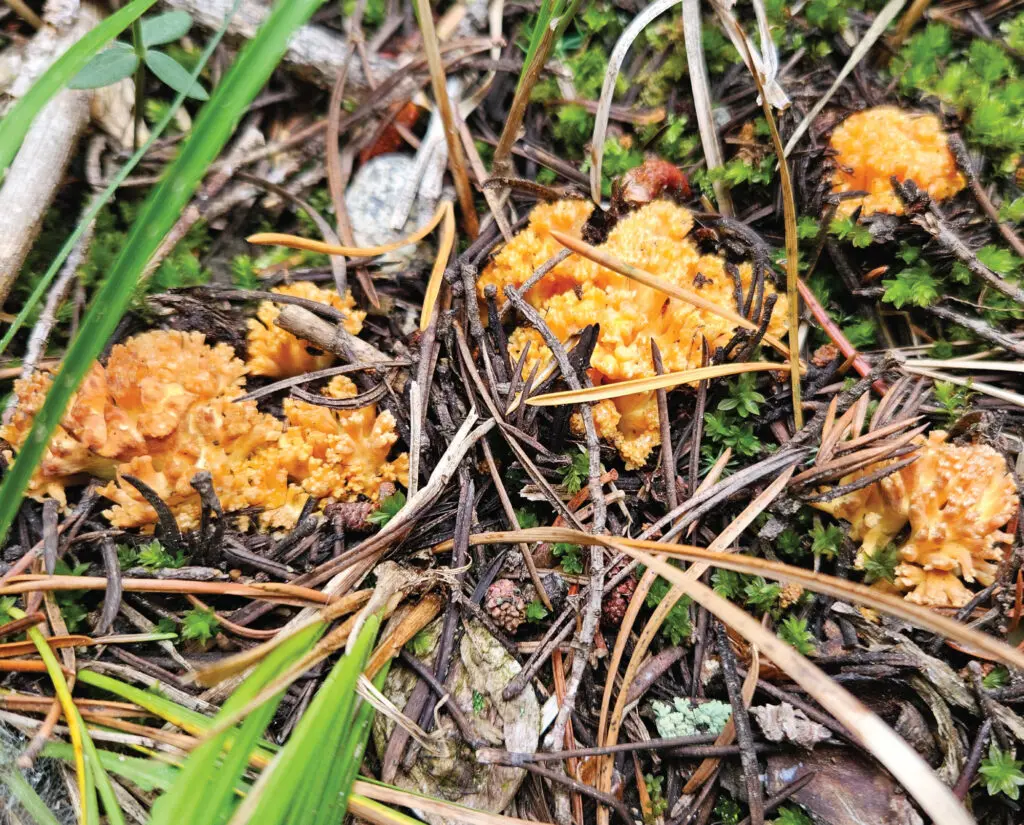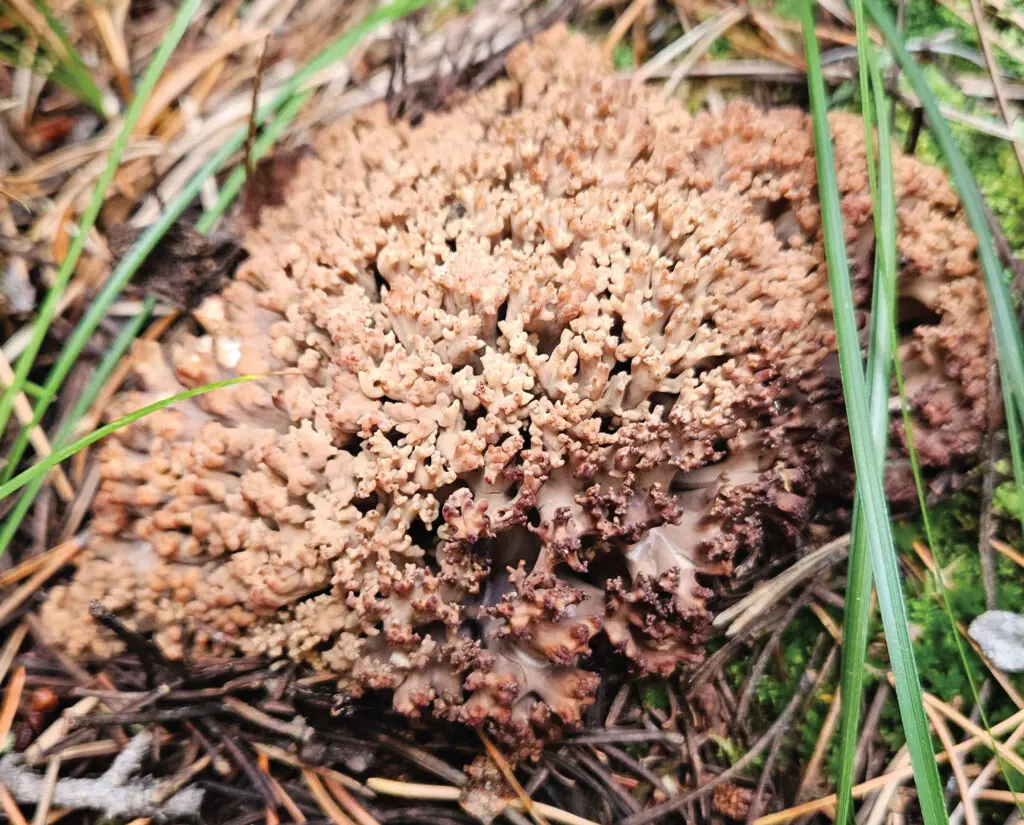Home » Foraging » Foraging for Edible Coral Mushrooms
Foraging for Edible Coral Mushrooms

Melissa An is a Colorado native originally from Colorado Springs…
Learn how to identify, harvest, and safely prepare coral mushrooms, reminiscent of ocean coral, for a delightful culinary experience.
싸리 버섯, or ssali beoseos, was a term I used while growing up in my Korean household. It’s translated as “clover mushroom,” but I later learned it referred to Ramaria botrytis, coral mushroom, or cauliflower coral fungus, a member of the Gomphaceae family. These mushrooms literally match their name; they look like ocean coral that grows right out of the ground, and it’s very noticeable due to their bright yellow or pale pinkish colors. They have thick, dense, white bases and grow in clusters with yellow spores. Their color slowly fades as they mature, but it’ll still be a noticeable yellowish-tan color. They don’t have a distinct smell and have a bland or bitter flavor when raw.
Depending on the winter season and snowmelt, I start checking locations for these mushrooms between May and June. During my childhood, I spent misty mornings on top of mountains searching for hints of yellow or pink, usually searching in a mix of conifers. Coral is found along the forest ground or at the bases of trees, especially near spruce trees, between 7,000 to 9,000 feet in elevation.

Selecting and Harvesting Coral Mushrooms
In the past, for easy harvesting, my mother would prepare these long-pronged picking tools; imagine a very long hand-weeder tool with pronged ends. Using this tool, we could easily stab the base of the mushroom, which is usually not visible, and pluck the mushroom out in one swift motion. This way, we leave a good portion of the base intact and in the ground to promote continuous growth while barely getting dirty. You don’t even have to bend down to remove the mushroom, which is ideal for people with bad knees.
In recent years, I’ve carried a serrated knife when foraging for mushrooms. However, I am a plucker when it comes to coral mushrooms. I genuinely enjoy the feeling of burying my hands into the earth, searching for the base of the mushroom, digging my nails in, and plucking the mushroom free. This still allows me to leave as much of the base as possible but also lets me feel if it’s even worth plucking the mushroom. With this method, I can get an idea of the density of the mushroom. The less dense it is, the more likely it’s been taken over by bugs. The plucking method allows me to see the condition of the mushroom before I remove it.
When selecting which size of coral mushroom to forage, you want the larger, harder clusters. Leave the smaller, flimsy bunches so they can continue to grow. Just remember that location, and check back later for more delicious treats! Coral mushrooms enjoy growing in the same locations.
After picking your chosen mushroom, inspect the specimen for any odd defects and bugs. Specifically, look for bug larvae. If there are too many bugs, cut the mushroom up, put some back in the hole, and spread it around the area where you found it. If the number of bugs is minimal or acceptably buggy – extra protein never hurts – then dust off the dirt by giving it a few quick waves in the air and stick the mushroom into a mesh bag. This waving act also helps spread mushroom spores. Mesh bags or holey baskets are ideal because they help spread spores and promote the growth of these and other mushrooms in the surrounding area.

How to Safely Consume Coral Mushrooms
Coral mushrooms are often ignored due to the difficulty of preparing them. Also, they can normally be a little poisonous. I’ve personally never had issues consuming these mushrooms, but my gut has coral mushroom-digesting experience. Therefore, I will explain the proper practices for preparing these mushrooms to ensure your safety.
Coral mushrooms are naturally brittle, with lots of stems and crevices. The entire structure can be dense and hard to work with, especially during cleaning. It can be tedious to give them a thorough cleaning. The best way to cleanse coral mushrooms is to boil them. Boiling makes the mushrooms more malleable and removes a large amount of the dirt and debris stuck on them.
After bringing home your coral mushrooms, fill your sink or a large tub with water and let the mushrooms soak for about ten minutes. This is an initial rinse and softens the dirt and debris stuck on the mushrooms. This is also a good time to break down your large clusters into smaller, more manageable clusters for preparing and eating.
While the mushrooms are soaking, boil enough water to cover all your mushrooms fully. If you don’t have enough room in your pot for all of them, cook them in batches. When the water is ready, place your mushrooms into the boiling water and let them go for about ten to fifteen minutes or until the mushroom is softer; you should be able to see and feel the difference. After your mushrooms have softened, remove them from the water and place them in another bucket with running water for a second rinse. During this rinse cycle, you will inspect each one of your mushroom clusters to ensure you have removed any debris you see. Give them a good swish through the water. After the second rinse, the final step is to place them into a clean bucket filled with water and leave them overnight to eliminate any lingering remnants. The following day, give them one final rinse and lay them on paper towels to dry. You can eat them immediately, dehydrate them, or freeze them for future meals.

Cooking and Eating Coral Mushrooms
My favorite way to enjoy coral mushrooms is to fry them with some sesame oil for 10 to 15 minutes. Season them with salt and pepper, and serve them on a bed of rice. This is a pretty simple recipe, but you can get creative with these mushrooms. They cook quickly due to their structure and are delicious in soups. They also make delicious vegetarian jerky. You are ready to put them into any recipe as long as they are appropriately cleaned.
Always remember that if you are trying a mushroom for the first time, taste test them in smaller quantities. Mushrooms are also a natural body cleanser, so you don’t want to consume too much at once.
Foraging for coral mushrooms is a wonderful way to spend time outdoors during hunting’s off-season. Early season scouting for fall hunts is a great way to learn your hunting spot, fill your mushroom basket, and have something delicious stashed away in the freezer to pair with your favorite upland bird recipes.
Melissa An is a Colorado native originally from Colorado Springs but now resides in the mountains of Golden. Melissa is an engineer who was raised as a forager starting at a very young age and hunted a variety of mountain vegetables with her family. She currently focuses on guiding with Uncharted Outdoorswomen and off-roading with 4GXCruisers!




I have been foraging for wild mushrooms for the last 60+/- years. While coral mushrooms are generally hard to confuse with other genuses and are generally thought by many to be harmless; I would still advise caution and suggest everyone educate themselves to the extent that they can identify with certainty, genus and species and edibility, before consuming these fungi. Even commonly eaten species can give certain individuals rather serious complications if sensitive to them.
I wish I could upload a photo here of the mushrooms that I saw near the Eno River in Durham NC. They look like Coral Mushrooms. I did not take any but love the idea of foraging.
Thank you for the article.
Dorianne
Interesting article. I harvest coral mushrooms here in north Idaho and have been for years. Ours are anything but dense, quite the opposite actually. They are very tender and quite delicate here. Easily fall apart when handling them. Cleaning is a tedious process because of how delicate they are. Chilling them in the fridge first helps the handling process. No color in ours, all white and occasionally a pastel yellow. Grow in large clumps (2-3 per grocery bag full).